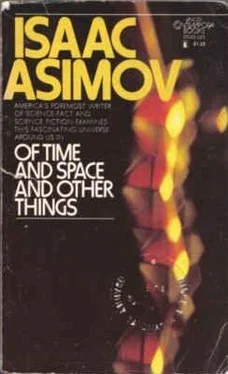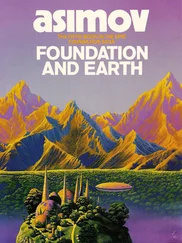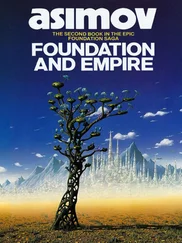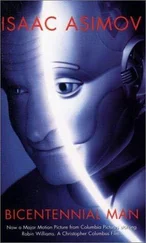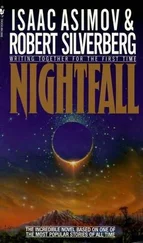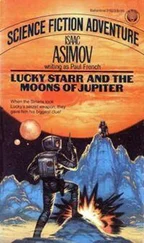Isaac Asimov - Of Time and Space and Other Things
Здесь есть возможность читать онлайн «Isaac Asimov - Of Time and Space and Other Things» весь текст электронной книги совершенно бесплатно (целиком полную версию без сокращений). В некоторых случаях можно слушать аудио, скачать через торрент в формате fb2 и присутствует краткое содержание. Год выпуска: 1972, ISBN: 1972, Издательство: Lancer Books, Жанр: Прочая научная литература, на английском языке. Описание произведения, (предисловие) а так же отзывы посетителей доступны на портале библиотеки ЛибКат.
- Название:Of Time and Space and Other Things
- Автор:
- Издательство:Lancer Books
- Жанр:
- Год:1972
- ISBN:ISBN: 0-447-33023-3
- Рейтинг книги:4 / 5. Голосов: 1
-
Избранное:Добавить в избранное
- Отзывы:
-
Ваша оценка:
- 80
- 1
- 2
- 3
- 4
- 5
Of Time and Space and Other Things: краткое содержание, описание и аннотация
Предлагаем к чтению аннотацию, описание, краткое содержание или предисловие (зависит от того, что написал сам автор книги «Of Time and Space and Other Things»). Если вы не нашли необходимую информацию о книге — напишите в комментариях, мы постараемся отыскать её.
Of Time and Space and Other Things — читать онлайн бесплатно полную книгу (весь текст) целиком
Ниже представлен текст книги, разбитый по страницам. Система сохранения места последней прочитанной страницы, позволяет с удобством читать онлайн бесплатно книгу «Of Time and Space and Other Things», без необходимости каждый раз заново искать на чём Вы остановились. Поставьте закладку, и сможете в любой момент перейти на страницу, на которой закончили чтение.
Интервал:
Закладка:
So I see nothing for it but to find a way of looking at the bright side, if any exists…
How long do organisms live anyway? We can only guess.
Statistics on the subject have been carefully kept only in the last century or so, and then only for Homo sapiens, and then only in the more "advanced" parts of the world.
So most of what is said about longevity consists of quite rough estimates. But then, if everyone is guessing, I can guess, too; and as lightheartedly as the next person, you can bet.
In the first place, what do we mean. by length of life?
There are several ways of looking at this, and one is to consider the actual length of time (on the average) that actual organisms live under actual conditions. This is the
"life expectancy-)I
One thing we can be certain of is that life expectancy is quite trifling for all kinds of creatures. If a codfish or an oyster produces millions or billions of eggs and only one or two happen to produce young thal are still alive at the end of the first year, then the average life expectancy of all the coddish or oysterish youngsters can be measured in weeks, or possibly even days. I imagine that thousands upon thousands of them live no more than minutes.
Matters are not so extreme among birds and mammals where there is a certain amount of infant care, but I'll bet relatively few of the smaller ones live out a single year.
From the cold-blooded view of species survival, this is quite enough, however. Once a creature has reached sexual maturity, and contributed to the birth of a litter of young which it sees through to puberty or near-puberty, it has done its bit for species survival and can go its way. If it survives and produces additional litters, well and good, but it doesn't have to.
There is, obviously, considerable survival value in reach ing sexual maturity as early as possible, so that there is time to produce the next generation before the first is gone.
Meadow mice reach puberty in three weeks and can bear their first litter six weeks after birth. Even an animal as large as a horse or cow reaches the age of puberty after one year, and the largest whales reach puberty at two.
Some large land animals can afford to be slower about it.
Bears are adolescent only at six and elephants only at ten.
The large carnivores can expect to live a number of years, if only because they have relatively few enemies (al ways excepting man) and need not expect to be anyone's dinner. The largest herbivores, such as elephants and hip popotami, are also safe; while smaller ones such as baboons and water buffaloes achieve a certain safety by traveling in herds.
Early man falls into this category. He lived in small herds and he cared for his young. He had, at the very least, primitive clubs and eventually gained the use of fire. The average man, therefore, could look forward to a number of years of life. Even so, with undernourishment, disease, the hazards of the chase, and the cruelty of man to man, life was short by modern standards. Naturally, there was a limit to how short life could be. If men didn't live long enough, on the average, to replace themselves, the race would die out. However, I should guess that in a primitive society a life expectancy of 18 would be ample for species survival. And I rather suspect that the actual life ex pectancy of man in the Stone Age was not much greater.
As mankind developed agriculture and as he domesti cated animals, he gained a more dependable food supply.
As he learned to dwell within walled cities and to live under a rule of law, he gained oTeater security against hu man enemies from without and within. Naturally, life ex pectancy rose somewhat. In fact, it doubled.
However, throughout ancient and medieval times, I doubt that life expectancy ever reached 40. In medieval
England, the life expectancy is estimated to have been 35, so that if you did reach the age of 40 you were a revered sage. What with early marriage and early childbirth, you were undoubtedly a grandfather, too.
This situation still existed into the twentieth century in some parts of the world. In India, for instance, as of 1950, the life expectancy was about 32; in Egypt, as of 1938, it was 36; in Mexico, as of 1940, it was 38.
The next great step was medical advance, which brought infection and disease under control. Consider the United
States. In 1850, life expectancy for American white males was 38.3 (not too much different from the situation in medieval England or ancient Rome). By 1900, however, after Pasteur and Koch had done their work, it was up to
48.2; then 56.3 in 1920; 60.6 in 1930; 62.8 in 1940; 66.3 in 1950; 67.3 in 1959; and 67.8 in 1961.
All through, females had a bit the better of it (being the tougher sex). In 1850, they averaged two years longer life than males; and by 1961, the edge had risen to nearly seven years. Non-whites in the United States don't do quite as well-not for any inborn reason, I'm sure, but because they generally occupy a position lower on the economic scale. They run some seven years behind whites in life ex pectancy. (And if anyone wonders why Negroes are rest less these days, there's seven years of life apiece that they have coming to them. That might do as a starter.)
Even if we restrict ourselves to whites, the United States does not hold the record in life expectancy. I rather think
Norway and Sweden do. The latest figures I can find (the middle 1950s) give Scandinavian males a life expectancy of 71, and females one of 74.
This change in life expectancy has introduced certain changes in social custom. In past centuries, the old man was a rare phenomenon-an unusual repository of long memories and a sure guide to ancient traditions. Old age was revered, and in some societies where life expectancy is still low and old men still exceptional, old age is still revered.
It might also be feared. Until the nineteenth century there were particular hazards to childbirth, and, few women survived the process very often (puerperal fever and all that). Old women were therefore even rarer than old men, and with their wrinkled cheeks and toothless gums were strange and frightening phenomena. The witch mania of early modern times may have been a last expression of that.
Nowadays, old men and women are very common and the extremes of both good and evil are spared them. Per haps that's just as well.
One might suppose, what with the steady rise in life expectancy in the more advanced portions of the globe, that we need merely hold on another century to find men routinely living a century and a half. Unfortunately, this is not so. Unless there is a remarkable biological break through in geriatrics, we have gone just about as far as we can go in raising, the life expectancy.
I once read an allegory that has haunted me all my adult life. I can't repeat it word for word; I wish I could. But it goes something like this. Death is an archer and life is a bridge. Children begin to cross the bridge gaily, skipping along and growing older, while Death shoots at them. Ms aim is miserable at first, and only an occasional child is transfixed and falls off the bridge into the cloud-enshrouded mists below. But as the crowd moves farther along, Death's aim improves and the numbers thin. Finally, when Death aiins at the aged who totter nearly to the end of the bridge, his aim is perfect and he never misses. And not one man ever gets across the bridge to see what lies on the other side.
This remains true despite all the advances in social struc ture and medical science throughout history. Death's aim has worsened through early and middle life, but those last perfectly aimed arrows are the arrows of old age, and even now they never miss. All we have done to wipe out war, famine, and disease has been to allow more people the chance of experiencing old age. When life expectancy was
Читать дальшеИнтервал:
Закладка:
Похожие книги на «Of Time and Space and Other Things»
Представляем Вашему вниманию похожие книги на «Of Time and Space and Other Things» списком для выбора. Мы отобрали схожую по названию и смыслу литературу в надежде предоставить читателям больше вариантов отыскать новые, интересные, ещё непрочитанные произведения.
Обсуждение, отзывы о книге «Of Time and Space and Other Things» и просто собственные мнения читателей. Оставьте ваши комментарии, напишите, что Вы думаете о произведении, его смысле или главных героях. Укажите что конкретно понравилось, а что нет, и почему Вы так считаете.
